Today, I have a triumvirate of tainted tidbits for you.
All processed to within an inch of their lives, all generously provided by three tea merchants. I really am very grateful to the three vendors in question, and hope that I don't seem ungrateful for posting my thoughts on these teas in a straightforward manner. They're really not "my cup of tea", I'm afraid, and I can't really say otherwise. 'Tis a difficult situation!
Let's get down to business...
My first Chenshenghao
First up, the 2008 Chenshenghao "Yiwu Dashu". If this is dashu [big tree], then I'd be surprised - one doesn't usually take beautiful big-tree leaves and then process them too heavily. They fetch a high premium on their potency and complexity, and thus it is definitely not sensible to remove those lovely characteristics by neutering the tea. Hence, I believe that many heavily-processed are unlikely to be of good stock.
Surely not "dashu"
This Chenshenghao sells for $35 at Red Lantern, a brand which the generous owner recommends as his favourite. It is easy-going and approachable, I'll give it that, but there's nothing here beyond some generic sweetness and a limited, tidy kuwei.
The wrapper tells me what to think of the tea, reminding me of supermarket wine and coffee
Next is a tea from London's "Jing" - this outfit is not the Jing Teashop that has become well-established in the world of pu'er, and which operates out of Guangzhou (and which I dearly love).
The tea has a distinct red hue in normal lighting conditions
You're no doubt tired of me writing that modern CNNP is where pu'er goes to die - a line that is as true here as ever it was.
I use all of the 10g sample generously provided by Jing, in order to attempt to combat the expected flatness. It is clear and energetic, but well-restrained. Actually, it's not a bad tea at all - and so shrugs off the CNNP stereotype, but it is overwhelmingly crushed by its processing. It is clean and pure, but long gone and exhausted by a half-dozen infusions, and simple throughout.
The mildly disturbing part is that the tea usually retails (not wholesales) for RMB55 (£5, $8), but is being sold by Jing for a stonking £35 ($50), which gives this tea the dubious honour of being, perhaps, the most amazingly marked-up pu'er I have encountered. Which is surely saying something.
Given that Jing's market is probably the person who buys sticky-toffee-pudding flavoured tea from Whittards, and not the sad folk like us who buy pu'er regularly, this is understandable. Most imported products from China undergoes a similar mark-up. I can't imagine that Jing are trying to crack the unprofitable world of Internet-based tea loonies with their line-up of three pu'er teas, and so assume that this is aimed at the man-in-the-street. If so, the processing and restraint of this tea makes sense - most people find real pu'er revolting, in my experience.
Errata: Jing Tea has asked me to point out that the above price refers to a xiaobing, of the same brand, whereas their offering is a larger cake from one year more recent. The vendor claims that they bought the entire production-run of their offering, hence the higher price. It is fair to conclude that a larger cake should attract a higher price (typically 1.25 - 1.5). While happy to correct the comparison of the Jing offering with what has turned out to be a smaller, older cake, I should, for the record, maintain that this cake is worth little more than RMB100 (£10), in terms of my subjective assessment of its quality.
Finally, a pu'er that I really, really wanted to like. It is made by the Liu family's Heshihua label, a connection of the delightful Mr. Tim from Postcard Teas.
It looks nice, at least
In my experience, if you see the name "Qiaomu Qiannian" [chee-ow-moo chee-an-nee-an, arbor 1000-year], then just run. Run and don't stop running. Don't look behind you. Whatever you do, don't drink the tea.
The road to Hell is paved with good intentions, and I'm sure that the dear old Liu family's intentions were the very best when they made this, their first cake. However, it really tastes like someones first cake, unfortunately.
True to its Qiaomu Qiannian name, it tastes a lot like red tea - the kind of pu'er that a beginner might make after observing makers of hongcha. It tastes sweet and malty... but that's it. Game over after three infusions.
Heshihua clearly can make good tea, as the 2004 Jingmai once sold by Nadacha shows. They just needed a little practice.
So, then, three teas that I can't recommend. Tasting tea that has been provided out of the generosity of someone's heart is fraught with danger - what if it's not brilliant tea? Sadly, I see no alternative but to be honest, otherwise these notes lose their function.
I genuinely appreciate the gesture. Thanks again for providing the samples, all three gentlemen.


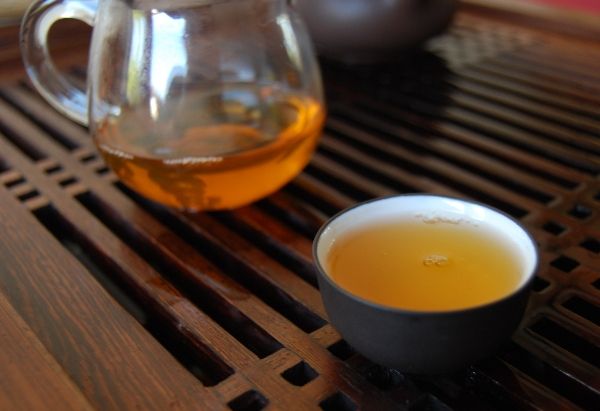
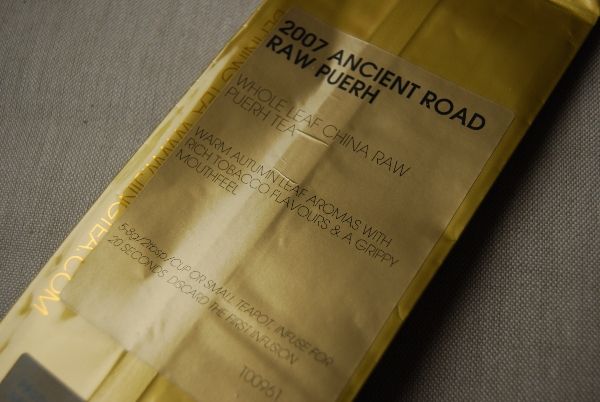
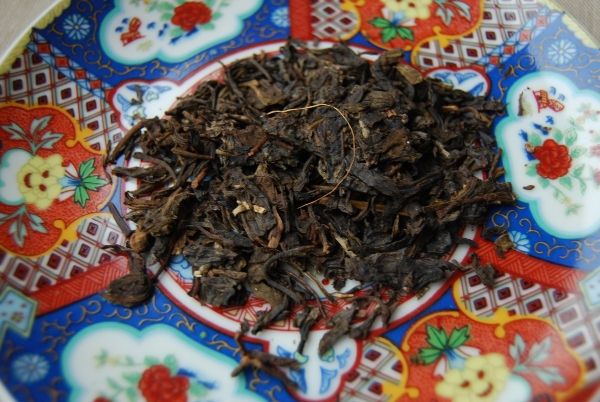
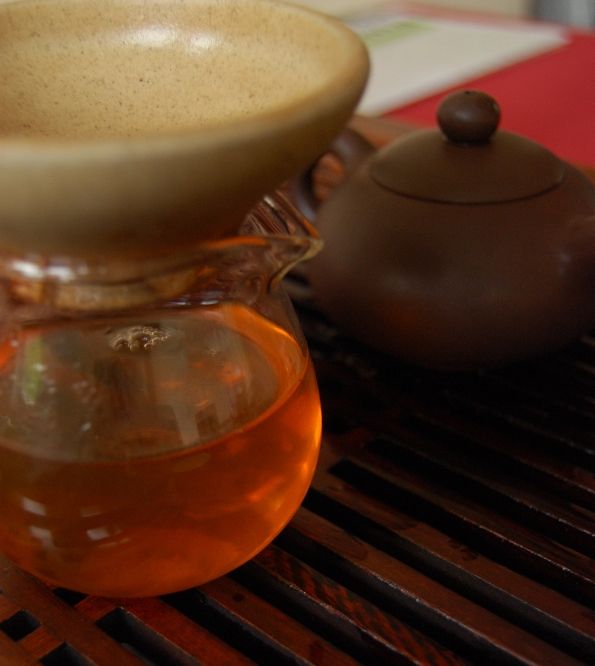

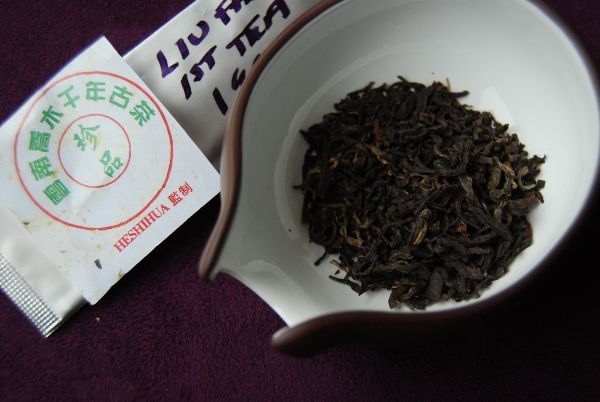



9 comments:
Most people find puerh revolting? You know, not one single time have I had someone try Puerh for the first time and said, ummm, that's good. Where did you get that? It usually go's something like, how can you drink that crap? Even my Chinese friends seem to give me the look of disgust and from then on are a little leary of me.
everyone
I have fed puerh to enjoyed it a little... Maybe I just have easy-drinking stuff, maybe all my friends are food and drink connoisseurs, but I have never had a negative reaction.
While I can't remember someone ever telling me that pu'er tastes revolting, most are nonplussed. That said, I imagine what most people understand by "pu'er" is shupu.
Best wishes,
Hobbes
I have found people are generally captivated by the taste of a good quality puerh. The problem can be the mouth feel from the tannins and fluoride.
Anonymous,
I'd agree. I've been brewing quite a bit of new sheng puerh in the teahouse for people who've only ever experienced standard 'British' tea before. The result has been remarkably positive. I think it's important to brew it quite lightly.
The percentages start to change when I brew up some dark, wet-stored sheng though & I haven't plucked up the courage to hit them with any shu puerh yet.
n.
Hi, I'm Wei QI from Malaysia. I am here to ask you whether you have interested to buy tea from me. I'm not a tea seller,i'm a student, this is a way to raise money for my school. Well, you might confused now. My school did this every year, besides selling tea, you can also donate some money for my school. Ok, don't get me wrong, what i mean is if you buy tea from me, the money you pay is for charity (for my school). So, if you want to buy the tea, i can pay for you first before you get the tea. After you get the tea, then you pay for me, ok? I just want to raise some money and yes i can asked people here to buy from me but i don't think so, the people i know do not drink tea. So, i commant here and see whether you want to buy it from me.
If you want to know more clearer, email me at weiqi.bloom@gmail.com
ok? Also, you can message me +60127891019 or if you don't want to buy from me, also let me know please.
I'm sorry for my poor Enlgish.
Have a nice day.
Wei QI
Dear Wei Qi,
Thank you for your offer - it sounds as if it is based on worthy foundations. I must decline, but wish you and your school all the best.
Kind regards,
Hobbes
I'd like to defend Jing Tea (UK), just a little, as I feel your writing just slightly demeans the company.
"Jing's market is probably the person who buys sticky-toffee-pudding flavoured tea "
You are probably right but only in so far as this is the UK market for tea, period. If you want to sell tea in the UK then you have to either cater for for the uneducated tea drinker, just like the supermarkets do, or try to educate the market. I believe, without doubt, that Jing falls into the later category.
I got into the chinese tea thing through Jing a few years ago and have followed their business since. They have never sold much puerh, specialising more in Oolong, Green etc.
Their prices are quite steep but I would say for their non-puerh tea they are a very reliable and honest buy. Their teas in my experience have been excellent. If they say "this is a great TGY" it almost certainly is.
They get their teas by visiting the producers, sampling "on site" as it were. They don't just buy from some chinese distributer for eg.
I would also like to tip my hat to their founder Edward Earler (I think thats his name - spell?). He is clearly a tea buff. More importantly he goes to great lengths to try and educate potential customers, such as through the media or by approaching "foodie folk" like big name chefs and food critics etc. Granted this is fine advertising for Jing but if you want to sell fine Longjing to the UK you have to educate the public somehow. I'd go as far as to say he has been a great ambassador for chinese tea in the UK.
Jing have never been a big Puerh seller - Fine pu is a whole different ball game to Oolong, green and whites. I don't look to Jing for any of my Puerh purchases, but having said that it was Jing that introduced me to the world of Puerh and for that I give them great credit.
I believe Jing's ambition is to sell fine chinese tea to the UK. They are facing a very hard market in the UK, and for that reason, I admire their ambitions, as well as their tea.
Dear Drumhum,
Thanks for the thoughtful reply. I append part of my reply to an e-mail with Jing from yesterday on the subject.
I agree that it's nice to see a merchant educating the public, as it's in everyone's interests. However, there is a slight contradiction when it comes to educating pu'er drinkers: educate the mainstream consumer too much, and they'll start to realise that your prices are inflated (RMB55 cakes sold for £35), and head to Yunnan Sourcing, Dragon Teahouse, etc.
---
Thanks very much for your reply - I'm sure that it goes without saying that blogs are to be taken with a pinch of salt, as they form that strange world between private diary and public web-site, and are written for a specialist audience. Hence, it is always a little awkward knowing that vendors are reading blogs as it isn't pleasant to read opinions about ones products if they are particularly frank in nature. Of course, an honest assessment is part of the appeal for non-vendors. :)
Regarding the CNNP "Gudao" cake (which was only produced in 2006, not 2007), the following link is a product listing from a trusted vendor from Taobao:
http://item.taobao.com/item.htm?id=5092954713
It's a nice, straightforward cake, but certainly not worth much more than RMB55, given the neutering that it has undergone during processing. I enjoyed its cleanliness - it's certainly one of the best modern CNNP cakes I've had, which tend to be rather dreadful. (Specialist pu'er drinkers are also aware of CNNP's rather poor reputation, and wouldn't expect to pay much for their products.)
Regarding Jing's target audience, I should clarify my comment! I meant that, given the high pu'er prices from Jing, and the selection of just three pu'er products, it would appear to the casual observer that Jing is not targetting purchasers who know a huge amount about Chinese tea - such buyers (which are in the vanishing minority, of course, as with all Internet minutiae) will be able to more accurately estimate the original price of the offerings, and would buy them either from Taobao or (perhaps more likely) pu'er specialists such as Yunnan Sourcing, Puerh Shop, Essence of Tea, Dragon Teahouse, etc.
Thankfully for most UK tea vendors' margins, most buyers know little about tea and its original pricing - indeed, this is true for most import-based products; UK customers are used to paying a premium for the convenience of having someone select their products for them, if they have neither the time nor inclination to hunt for their own sources. Hence my comment that the target audience appears to be those people who are part of the mainstream, and would accept such prices as a consequence of having to avoid learning about pu'er provenance and researching Internet-based vendors. I think the article on the Half-Dipper shows an excerpt from my diary, which reads "pu'er for people who shop at Whittards, but who know that there might be something better than sticky-toffee-scented-tea"; i.e., the mainstream buyer yearning for something better, not knowing how to obtain it, and consequently accepting high margins to buy it from a trusted UK vendor.
To be fair, it is to my constant amusement that, despite working with scores of Chinese nationals, I have never met one outside of the PRC's major tea districts that knows very much about tea, or could even name half of the "shi da ming cha" (十大名茶), for example. (This includes the Chinese half of my family...)
Post a Comment